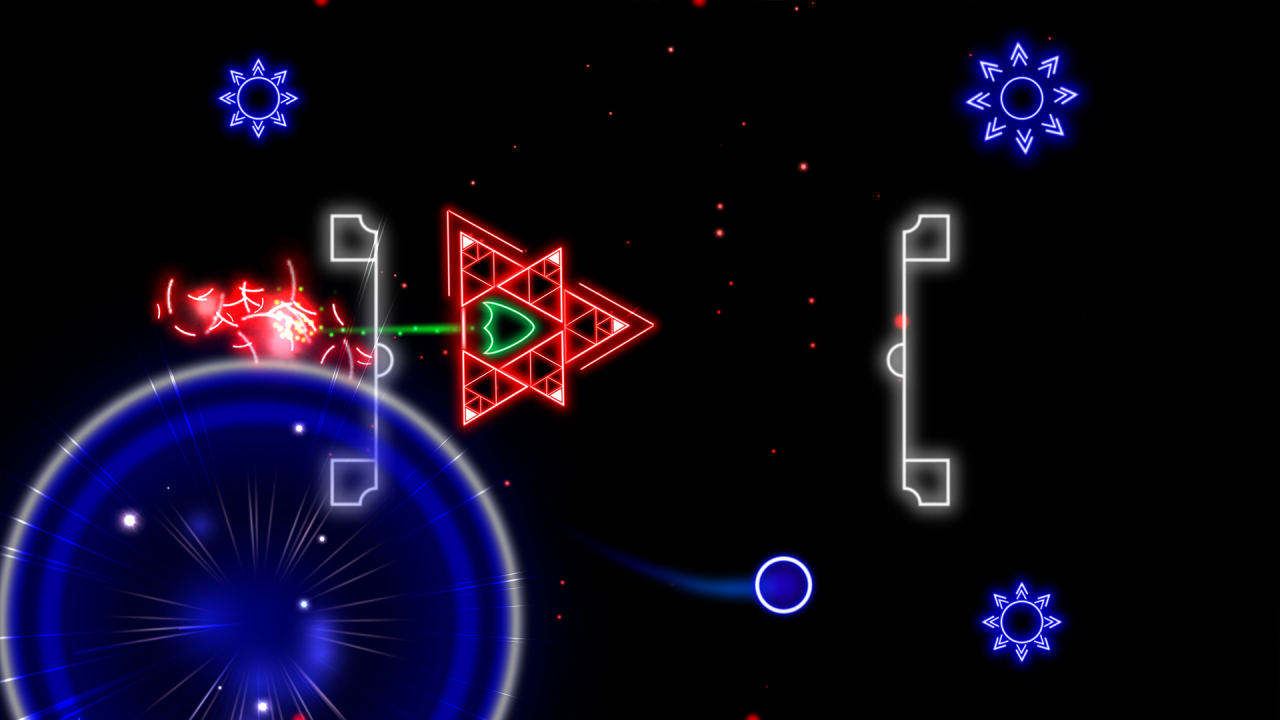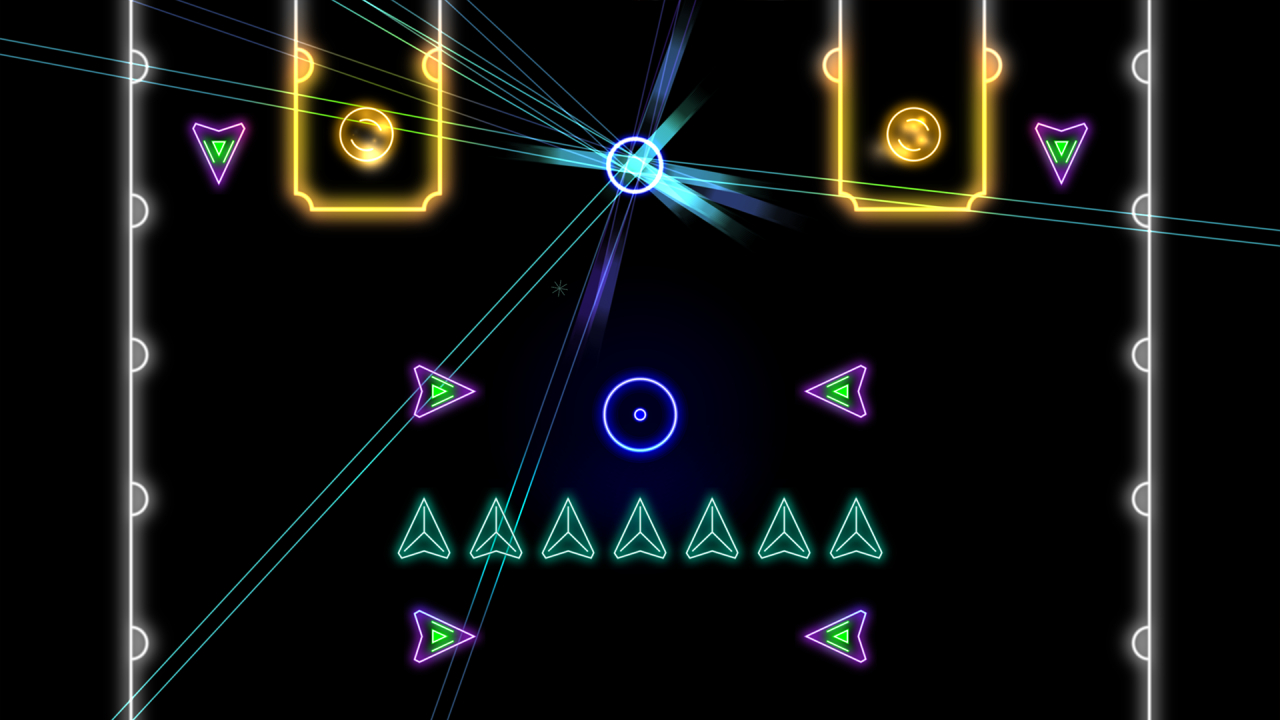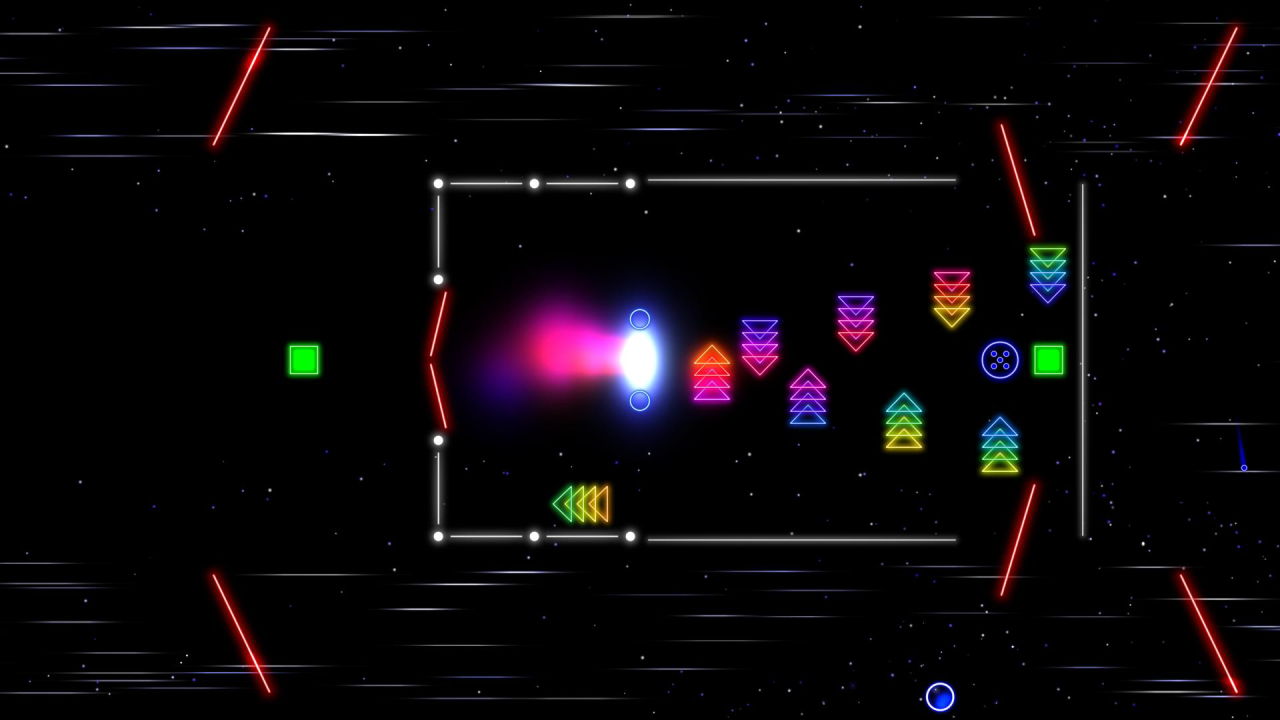Become a vector victor.
I’m a sucker for vector graphics. I have been since first stepping up to a Battlezone machine back in the early ’80s. As such, I dig it when modern games adopt a vector-like look. I’ll take that over the 8-bit or 16-bit retro-vibe any day.
That said, vector visuals don’t lend themselves to all types of gameplay. Arcade action is pretty much your only option, but that’s what makes them a perfect fit for Ellipsis. You’re dealing mainly with balls and obstacles here, and the stark contrast of neon colors against a black background adds some much-needed flair.
Your task in Ellipsis is to move your circle so it comes into contact with other circles. Touch them all, and you can enter a warp to the next level. Some of the circles you touch release smaller ones which you can gather to improve your star rating. You also don’t have to touch all of the circles on the screen to warp out. The last one is often quite difficult to reach, so it’s more for completionists than those who just want to push through the game.
There are myriad obstacles in your way, of course, and they get progressively tougher and more unique. Interestingly, they’re not always random. Although some will follow you around, many move in set patterns. The challenge then becomes memorizing the patterns and figuring out how to get into the flow, making Ellipsis as much of a puzzle game as an arcade action game. I enjoyed that.
Figuring out the patterns, however, is only half the battle. Working your way through the obstacles requires some precise and well-timed movements. This can be difficult using your Joy-Con control sticks, although I found them to be a bit tighter than my Pro Controller. You can also use the touchscreen in handheld mode. Your hand and finger will block your view of the obstacles, but I found this the only way to get through some of the more brutal spike tunnels.
A few levels allow you to inch your way through, but most require very quick actions in order to get where you need to be and back out again before another obstacle hits you. It wasn’t uncommon for me to get hit when attempting to reach that last circle, but this never becomes terribly frustrating. With proper timing and action, you can wrap up many of the levels in 10 to 20 seconds. As such, having to start over is not a big deal.
Ellipsis provides over 150 levels for you to conquer, spread out across eight worlds. And although the puzzles remain somewhat clever throughout and the obstacles become more lively, there’s really not a whole lot to differentiate one from another (although there are certainly some standouts). This isn’t a problem visually; that’s the nature of vector graphics. The repetitive gameplay, however, meant that I would never play more than a few levels in one sitting.
That may be okay. This is a throwback to ’80s arcade games, after all, and it’s not like I’d ever play more than a few rounds of Asteroids or Red Baron in standing, either. And at least Ellipsis saves your progress and allows you to pick up where you left off. Of course, you’re also given the option to bounce back to previous levels so you can improve your star rating. I’m not sure the game provides enough incentive to do so, but at only $5, it provides more than enough incentive to give it a try.
Review: Ellipsis (Nintendo Switch)
Good
With its minimalist presentation and gameplay variations, Ellipsis accurately captures the positives and negatives of classic arcade games. There’s not enough here to warrant lengthy gameplay sessions, but it’s fun in short bursts and looks great all the while.





